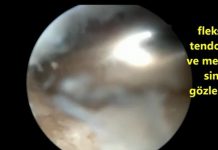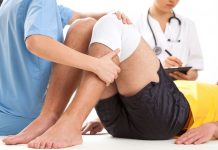PRP (PLATELET RICH PLASMA) IMPLEMENTATIONS FOR KNEE JOINT PROBLEMS
BASIC INFORMATIONS
Platelet is one of the three cell types in the blood. Its main purpose is to thrombose in order to stop bleeding in case of an injury. To provide this, they include growth factors and cytokines which can be vcalled as the intensively regenerative proteins within the cells. The preperate acquired by drawing the patient’s own blood, subjecting it to the mechanic implementations and increasing the density of the platelet is called as PRP. By this concentration which is highly above the physiologic levels, the area is intensively applied proteins called growth factor and cyutokine. It is already known that the regenerative cells of these proteins have the alarm mission on the injured area. It is assumed that with this implementation, the area with pain due to tendon pathology shall be repaired first and the pain will be decreased ro relieved accordingly.
THE AFFECT OF THE SAID MECHANISM ON THE TENDON INJURY HAS BEEN PROVED IN THE EXPERIMENTAL STUDIES (IN VITRO). Besides, it is not clearly known which growth factors are released at what rate after the implementation with PATIENTS (IN VIVO), their action mechanism and period and the reaction of the normal tissues to this implementation.
To summarize the publised diseases that have been applied PRP treatment at least to relieve the pain within the last 10 years:
PROBABLE PRP APPLICATION FIELDS FOR KNEE JOINT PROBLEMS
1)Tendon injuries:
a)anterior knee pain (patellartendinitis) (PRP issue 3,5, 23)
b) Tendon repair stimulation (PRP issue 2)
2)Ligament injuries:
a) Medial colleteral ligament injuries of knee joint (PRP issue 12 and 13)
3) Cartilage problems (corrosion-arthritis)
a) Repair of large cartilage corrosion-losses (PRP issue 4)
b) Arthritis – corrosion on the knee joint (osteoarthritis) (PRP issue 7)
c) Repair of the meniscus injuries (PRP issue 20)
d) Strenhtening of the anterior cruciate ligament of the knee
4) Bone problems
a)Fracture healing problems (disunion) (PRP issue 6 and 18)
b) Treatment of the non-healing stres fractures of the athletes (PRP issue 17)
Most of the studies are empirical and subjective. Although a well-being condition is observed, its action mechanism cannot be proved and it is not clear how much time will this well-being long.
WHAT IS AUTOLOGOUS PRP?
“Autologous” means the own body of the person. It means that the person’s own tissues are used instead of another person’s or animal’s tissue as the source. In this method, an injured or sick tissue is applied by the person’s own plasma (growth factors) in a cpncentrated form. In PRP (platelet rich plasma) more growth factors are released than normal plasma and so more stemcells reach than normal wound healing.
PREPERATION AND CLASSIFICATION OF PRP
Now, 16 different types of PRP preperatıon system are sold in the USA. Basically, an amount of blood is drawn from the patient’s vein system and erythrocyte (red blood cell) is seperated by centrifuge. The acquired liquid (plasma) is processed again and platelet rıch plasma (PRP) is seperated from platelet poor plasma. In accordance with the differences among the systems on sale, the density rate of platelet can be 1.6 to 12 times more than normal blood. Besides, the amount of leucocyte in the PRP acquired in each system can vary. Another variable factor is that whether any chemical material called activator is added to the prepared PRP or not. The general opinion is that it would be better if no activator is added. These chemicals called activator are simply calcium and thrombin. In some implemtentations, they have been observed to create clot (within the injector) at the very ealy stage. It is stated that the PRP without any activators makes the growth factors swing as it contacts the protein called collagen which is already existing in the tendon.
In summary, the PRP solutions applied to the patients are not monotype. Thus, it is not possible to analyse the publications as a whole (meta analysis). There are 3 important factors differentiating each PRP preparetes:
1-Platelet concentration / total acquired amount (volume)
2-Leucocyte amount
3-Whether activator is used.
HOW DOES PRP AFFECT?
PRP has been used by the orthopedicians for many years in the treatment of muscle-sceleton system especially with chronic pain. The two main problems are that the mechanism of actions has not been proved and whether this pain relieving affect is permanent is not clear yet.
Chronic patellar pain, patellartendinitis (Jumpersknee): The repair on the body after the tendon injuries is composed of 3 periods: Inflammation period, formation period and remodelling period. The process starts with congestion on the injured area. This congestion is called hematoma. Then, the platelet within the hematoma is activated and releases the growth factors. The area starts to receive cell flow and the draft healing tissue, which is called granuloma” occurs. This tissue starts to produce collagen; the protein which is the principal of the body. Then, respectively, formation and remodelling (the study to increase the quality of wound tissue) starts. Although it is NOW known that the growth factors have early stimulating and healing accelerator effects; it should be studied on whether it has benefits in the long term.
The role of the PRP implementations on increasing the rate of healing of the patellartendon has been shown with animal studies (PRP issue 3). Besides, in the prospective clinical studies performed with comperative groups; the group applied PRP treatment has proved to be better and faster healing signs and higher development in the sports activities. (PRP issue 5).
Effect on cartilage problems: Animal studies have shown that PRP implementation has increased the healing rate of large cartilage losses and the quality of the healing tissue
(PRP issue 4).
Knee joint arthritis-corrosion (osteoarthritis): It has been observed that 3 PRP implementations into the joint of the persons having osteoarthritis have significantly relieved the pain on the knee joint and increased the movement limits. However, the number of the patients performed this implementaation is low and the term of follow-up is short (12 months) (PRP issue 7). In another study including 20 patients, it has been observed that the results of the PRP imlementation are statiscally better than intraarticular hyaluronic acid injection (PRP issue 8).
INEFFICIENT AREAS OF PRP IMPLEMENTATION IN THE MUSCLE-SCELETON SYSTEM
The PRP implementations regarding the osteoarthritis have been performed with stage 1-3 patients. To summarize, PRP treatment should not be considered as alternative to surgical treatment. It should not be considered that PRP treatment could be alternative or eliminate the need for surgical treatment for a patient diagnosed with surgical treatment (total prothesis etc.) indication by an orthopedician. The results of further studies are required.
PROBABLE COMPLICATIONS
The most probable complication is not to have the aimed response to the treatment. Besides, as the treatment is performed by injection has little painfull process. Another important issue is the financial results. Most of the insurance companies still accept the PRP treatment at the research stage; meaning that the financial part belongs to the patient. After all these problems, not having the aimed response to the treatment can be disappointing for both the patient and the doctor.
SAFETY ISSUE
Since the person’s own tissue (blood) is used, PRP is an implementation of which safety concern is classified as “minimum” in the USA. Local reaction is rarely presented. Pain and a little swelling after the injection are expected outcomes.
In a laboratory research, PRP is found out to have antimicrobial effect against bacterias like S. Aureus and E. Coli. That’s why, the infection (inflammation) risk is almost nonexisting.
There have been many scientific publications within the last 5 years regarding the usage of PRP in the orthopedic problems. Even though it is stated that most of the results of the studies are good; there are still some deficiencies. An issue published in Britis Medical Bulletin magazine in 2009 has detected the deficiencies of these publications. The most significant of them is the deficiency of standardization of the amount and type of growth factors in the injection preparate (PRP issue 1, 9, 14).
In summary, besides all the feedbacks; it should be taken into consideration that the results of the controlled, random and prospective standardized studies can vary.











